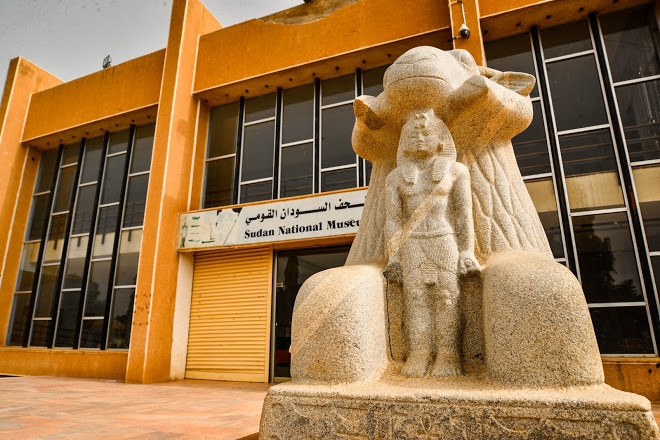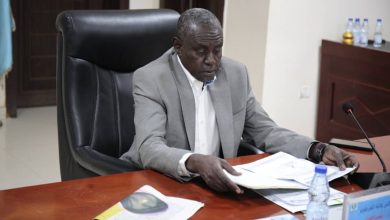Reports
An urgent distress call to UNESCO RSF militia loots Sudan’s National Museum in Khartoum

Sudan Events – Agencies
Mubarak Mahgoub Musa
As if it wasn’t satisfied with all the documented crimes of genocide, ethnic cleansing, systematic starvation and displacement of the Sudanese people, it continues to perpetrate since its military coup in April 2023, in an alarming development, the treacherous hands of the RSF militia, already stained with the blood of innocent Sudanese people, stretched to tamper with the history and collective conscience of the Sudanese people.
News sites and social media started to publish how the terrorist militia carried out clandestine operations (revealed by satellite images) and systematically looted and smuggled the collectible valuable contents and artifacts of Sudan National Museum.
The Sudan National Museum, built in 1955, encompasses many Nubian and Kushite civilizations and the civilizations of the Kingdom of Alwa and the great ancient Karma civilization, which flourished from around 2500 BC to 1500 BC in ancient Nubia. Moreover, this museum includes skeletons of some of the kings of that abysmal historical era. The museum also contains the most important historical pieces of antiques, statues and archaeological collections of high national, historical and material value.
Sudan National Museum necessarily recounts a history and civilization that is not only the most important in the region, it’s indeed the civilization that many archaeologists today like Professor. D. Wildung, the former director of Egyptian Museum in Berlin, do believe it preceded its ancient Egyptian counterpart, perhaps by hundreds of years.
The current systematic theft of the Sudanese National Museum in Khartoum is inseparable from the imperialist forces’ attempts to bring about forced demographic change in the Sudan and to erase and dismantle the cultural and historical identity of the Sudanese people, by financing, arming and inciting the RSF militia to engage fully in incineration and systematic destruction of to name a few; Sudan National Records Office, which serves as Sudan’s national archives, which contains 20 million documents and 13,000 volumes on the history of the Sudan since 1870, the burning of national and public libraries in Khartoum, the archives of national radio and television, the registration of land in the capital and the states, as well as the archives of the General Department of Passports and Immigration.
This is an urgent distress call directed not only to the Secretary-General of the United Nations, Mr. António Guterres, and the Director-General of UNESCO, Audrey Azoulay and equally to Adele Khodour the UNICEF Regional Director for the Middle East and North Africa, to urgently intervene to preserve and protect Sudanese monuments from theft and destruction, and to take all prompt and necessary precautions to trap and recover these stolen items.
As a matter of fact, the prompt international intervention is badly needed to stave off the tragic losses in which centuries of history and the cultural heritage of a great country such as Sudan, could go unheeded.
International laws, in particular The Hague Convention of 1954, concerning the Protection of Cultural Property in the event of armed conflicts, stipulates that cultural property must not be targeted or used for military purposes. Moreover, UNESCO has major historical contributions and agreements to assist the Sudan in preserving its heritage and civilization; here we must note UNESCO’s valuable contribution to saving many of these monuments from drowning during the construction of the High Dam in Egypt. and how UNESCO has led the giant global efforts in this regard, which lasted for almost 20 years and more, beginning in 1968.
The current incidents of theft of monuments by the RSF militia, represents a recent version that calls forth, the events of theft of monuments by European forces during the colonial era, and how their major museums were filled with such thefts. Sudan desperately needs helping hands in the restoration and the retrieval of the Sudanese monuments and artifacts, looted in different ties of history. Fortunately, a matrix has already been prepared featuring not only the number and the classification of these artifacts, but also the museums and the countries where they are currently displayed.
Last not least, in the aftermath of the unprecedented flooding currently sweeping the northern states of the Sudan which constitute a direct threat to the archaeological areas of Nabta, Marwi and other sites, included in the World Heritage List, UNESCO is strongly called upon likewise, to intervene urgently to preserve and protect these affected archaeological areas



